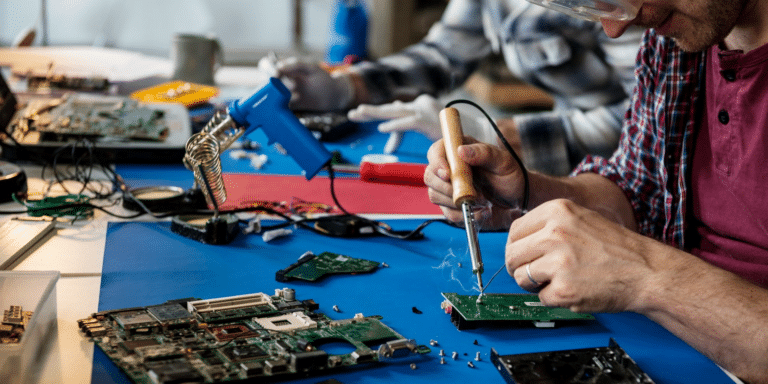The home healthcare industry has been experiencing a breathtaking growth spurt over the past few years. The U.S. Bureau of Labor Statistics predicts a 21% surge in home healthcare jobs by 2031, adding 711,700 positions each year—triple the national average growth rate!
Why the boom? It all boils down to demographics. America is getting older, fast. The U.S. Census Bureau estimates that the population of people over 65 will nearly double by 2050, jumping from 43 million to 84 million. As the senior population grows, so does their need for extensive, specialized healthcare services. This is where home health aides come in, offering a convenient and comfortable solution for aging adults who want to remain independent in their own homes.
However, the future of home healthcare is about more than just filling open positions or caring for people in their homes. It’s about harnessing innovation to create a positive and holistic care experience for the aging population or people with health challenges that can be managed at home rather than in a hospital.
This article will explore seven exciting advancements shaping the future of home healthcare in America.
Telehealth and Remote Monitoring
Forget battling traffic and waiting rooms! Telehealth brings healthcare directly to you through video calls with your doctor. This technology is a game-changer, especially for people in rural areas with limited mobility or those managing chronic conditions. Imagine specialist consultations from your couch – telehealth makes healthcare more accessible than ever.
Remote monitoring takes things a step further. Think smartwatches or discreet devices that track your vitals at home, sending data securely to your doctor. This allows for proactive care. For instance, a sudden blood pressure spike could trigger a quick telehealth call to adjust medications before a more significant problem arises. Telehealth and remote monitoring can lead to better health outcomes and a higher quality of life for you by catching issues early and getting you regular virtual check-ins.
Wearable Technology and Sensors
Wearable technology is poised to play a significant role in the future of preventative healthcare. While the Health Information National Trends Survey shows a substantial portion (almost one-third) of Americans use one type of wearable device or another, less than a quarter of those with or at risk for cardiovascular disease—a leading cause of death—leverage this technology.
Wearables like smartwatches and fitness trackers can continuously monitor vital signs and activity levels, providing a wealth of data for preventative care. Imagine a smartwatch that detects an irregular heartbeat—a potential sign of a heart condition. With this information, you and your doctor can act early, potentially preventing a more severe event.
AI-powered Care Management Platforms
Think of a healthcare assistant who learns your habits, analyzes your health data, and even predicts potential problems—that’s the power of AI-powered care management platforms. These platforms go beyond simple appointment reminders. They use artificial intelligence to analyze your medical history, data from wearable devices (if you use them), and even genetic information, if available. This allows for some pretty impressive feats like:
- Personalized Care Plans: A.I. can identify patterns and trends in your health data, tailoring a care plan that specifically addresses your needs. Think of it as a roadmap for optimal health, unique to you.
- Predictive Health Risks: By analyzing vast amounts of data, A.I. can identify early signs of potential health issues before they become major problems. Think of it as a red flag system, allowing for early intervention and preventive measures.
- Connecting You with Resources: A.I. can identify gaps in your care and connect you with helpful resources. This could be anything from a nutritionist for dietary guidance to a support group for managing a chronic condition.
Expansion of Home-based Rehabilitation Services
Rehabilitation after an injury or surgery is crucial for regaining strength and mobility. Traditionally, this meant lengthy stays in a hospital or rehab center. However, the future of home healthcare is seeing a shift towards home-based rehabilitation services. This means therapists come directly to you, offering physical, occupational, speech, mental or behavioral therapy in the comfort of your home.
There are several advantages to this approach. Firstly, healing often progresses faster in familiar surroundings. Imagine recovering from a knee replacement surgery surrounded by loved ones and your own furniture. This eliminates the stress of adjusting to a new environment and allows you to focus solely on getting better.
Secondly, therapists can tailor treatment plans to your specific needs and living space. Exercises can be designed using your own stairs or incorporating everyday objects you use regularly. This personalized approach ensures a smoother transition back to daily life, as you’ll already be practicing essential skills in your environment.
Focus on Social Determinants of Ill Health
Health isn’t just about medical checkups and medications. It’s also heavily influenced by your social and economic environment—called social determinants of health. Think of them as the conditions you live, work, and play in. Factors like access to healthy food, safe housing, and social support networks can all significantly impact your well-being.
For instance, living in a food desert with limited access to fresh fruits and vegetables can contribute to poor nutrition and chronic health problems. Similarly, social isolation can lead to feelings of loneliness and depression, which can weaken your immune system and overall health.
Home healthcare can play a vital role beyond just medical care. Home healthcare providers can screen for social determinants of adverse health conditions and connect patients with valuable resources.
Skilled Nursing and In-home Care
As home healthcare expands, the need for skilled and specialized providers becomes paramount. While traditional nursing skills are essential, home healthcare demands different skills. Many home healthcare patients usually suffer from conditions like motor neuron diseases, physical disabilities, or other chronic conditions that can often be managed from the comfort of one’s home.
Geriatric care is another crucial area of focus. The aging population presents unique challenges. Providers trained in geriatric care understand the specific needs of older adults, from age-related physical changes to cognitive decline. This allows them to deliver care that is not only medically sound but also sensitive to the emotional and social aspects of aging.
Financial and Policy Innovations for Home Care Accessibility
Home healthcare offers many benefits, but affordability can be a major hurdle for most people. The cost of in-home caregiving and specialized services can be substantial, and traditional insurance coverage for home healthcare can be limited. This creates a situation where some who could greatly benefit from home care might be unable to access it.
So, how can one bridge this gap and make home healthcare a more realistic option for everyone?
- Government Initiatives: Government programs like Medicaid waivers or Medicare Advantage plans could be expanded to cover a wider range of home healthcare services. This would make home care a more viable option for low-income individuals and those on fixed incomes.
- Private Insurance Expansion: Private insurance companies could be incentivized to offer more comprehensive coverage for these services. This could involve offering plans with lower deductibles or co-pays specifically for in-home care.
- Creative Financing Options: Innovative financing models could be explored, such as loans with favorable terms specifically for home healthcare costs. This would allow individuals to spread the cost of care and make it more manageable.
Wrapping Up
These advancements, coupled with a growing emphasis on affordability and accessibility, paint a brighter picture for the future of home healthcare. It’s a future where technology empowers you to take charge of your health, and skilled professionals deliver compassionate care tailored to your specific needs in the comfort of your home. This future is closer than you think, and it has the potential to revolutionize the way individuals care for the aging population and people with chronic conditions.
Published by: Nelly Chavez








